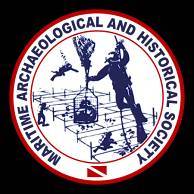No other thermal anomalies were
observed in the field. In fact, the heat signature of the ground surface across the field was found to be very complex,
suggesting a large amount of widely scattered surface disturbance.
Near the end of the survey, it was discovered that
several years previously the entire field had been graded with a small bulldozer in an effort to clear it of brush and accumulated
debris. This process appeared to have turned the surface deposits over sufficiently to produce what was effectively random
thermal noise images, obscuring any earlier signatures which may have been present.
A main finding of the themal imaging
survey was thus methodological in nature. That is, the ability of heat signatures from centuries-old archaeological features
may not survive in easily recognizable form in active fields.
|
Note: the historical
photographs used on these pages are available from the Library of Congress American Memory Project web site; the
paintings, also accessible from the Library of Congress, are by Robert Knox Sneden, a map maker for the Union Army;
the thermal images are courtesty of John Kuch and the Electronic Surveillance Section of the Fairfax County Police
Department.
|


